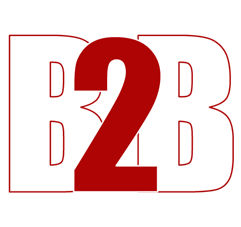Guest BLOG by Tom O'Hare | Apr 18, 2024 | College Admissions, Financial Aid
I have worked in higher education enrollment and financing for over thirty years and am a parent who has experienced the sector firsthand. I have seen the evolution of technology, regulations, practices, and policies to support students and families in pursuing education and career goals. Never in my time have we experienced such a high level of uncertainty affecting the lives of hundreds of students and families looking to college in September of this year.
In early 2023, the US Department of Education announced its desire to change the financial aid form known as the FAFSA to create a ‘Better FAFSA.’ Subsequently, ED announced it would not make the new application available for the traditional October 1 start of the financial aid season. Although finally released in January 2024, it has been plagued by application completion challenges, methodology inaccuracies, and prolonged delays.
This inefficiency of the Administration and ED prevents the delivery of critical student and family information to colleges and universities. Traditionally, all colleges and universities would have communicated their financial aid offers to students /families by this date. These offers are critical to a family’s ability to make final institutional choices. The absence of this vital information may jeopardize first-time, returning, and transfer students from enrolling in September of this year.
What’s At Stake
Students and families relying on tuition assistance, especially need-based aid awarded beyond merit scholarships, are caught in this enormous catch-22. Need-based aid could be a college or university Grant, a Federal Pell Grant, a State Grant, or even a private external scholarship awarded based on financial need. The assistance that hundreds of students and families accepted to attend and enroll at a 4YR, 2YR, Community College, or an accredited technical, trade, and vocational school rely on to make their institutional choice. The same institution is also affected like any other business as they forecast enrollment to deliver academic and campus services to students and families effectively.
The clock is ticking, deadlines are approaching, and nerves are escalating. Consider your options if your final school falls into one or more of these categories and you are awaiting your financial aid award letter; consider your options:
Group #1
Institutions in this group will not extend their acceptance and housing deposit dates past May 1, 2024.
Action Steps:
- If resources exist to cover the net cost, excluding borrowing a sizeable private student loan – GO – If not.
- PASS and go to Plan B!
Note: Most schools in this category will not budge significantly. They control the supply and demand of enrollment on their campuses.
Group #2
These institutions have announced they are not moving their May l dates, but they will review requests on a case-by-case basis.
Action Steps:
- Calculate the net cost remaining. Can you manage finance 80%, 60%, or 40% of the remaining costs?
- Using a honey versus vinegar approach, contact the Admissions Department to discuss your interest in attending in September.
- Indicate that you are looking for a specific number; if awarded, you will deposit immediately.
- Admissions may have to consult with Financial Aid before committing.
- If you receive an offer, compare it against your financing capabilities, excluding borrowing a sizable private loan, GO, or PASS.
Note: Schools in this category are generally borderline concerned with hitting their enrollment number and may be willing to assist further.
Group #3
Institutions in this category have indicated that their deposit dates have moved to June 1, 2024.
Action steps:
- Contact your school choices in this category with a greater sense of urgency.
- Apply the same process and approach as in Group #2 and have a number in mind that, if obtainable, will accelerate the decision-making to YES.
Note: Most schools in this group are concerned about their September enrollment numbers, and their willingness to assist may surprise you.
The student should initiate action to communicate and arrive at a mutually agreeable and affordable enrollment cost at the school(s) interested in attending. Reach out to school(s) under final consideration to compare merit scholarships and tentative awards already received or review pending estimated awards. Parents are brought into the conversation to review financial information or submit a formal appeal if needed.
Historically, the higher education industry has been very open to conversations with students and families regarding financial aid appeals, those tied to extenuating circumstance. Many may now may be moved to a “win-win” decision with students and families regarding the net cost of enrolling. Don’t wait!
Learn more by reaching out to us at Get College Going
Red Flag Alerts: Do not touch retirement money, and be cautious of the lure of private loans

Start a Conversation
Subscribe to Our Newsletter
Co-author, Pivotal College Planning Workbook, the Workable Workbook
Subscribe to the Pivotal College Years YouTube Channel for families and professionals.
Disclaimer: Get College Going and Pivotal College Years are not financial advisors.
Please consult with your investment, tax, and financial professional.
- 9 views





